Welcome to Subscribe On Youtube
3208. Alternating Groups II
Description
There is a circle of red and blue tiles. You are given an array of integers colors and an integer k. The color of tile i is represented by colors[i]:
colors[i] == 0means that tileiis red.colors[i] == 1means that tileiis blue.
An alternating group is every k contiguous tiles in the circle with alternating colors (each tile in the group except the first and last one has a different color from its left and right tiles).
Return the number of alternating groups.
Note that since colors represents a circle, the first and the last tiles are considered to be next to each other.
Example 1:
Input: colors = [0,1,0,1,0], k = 3
Output: 3
Explanation:

Alternating groups:
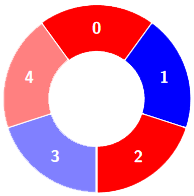
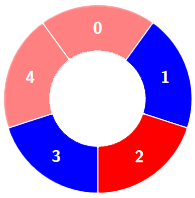
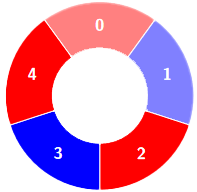
Example 2:
Input: colors = [0,1,0,0,1,0,1], k = 6
Output: 2
Explanation:
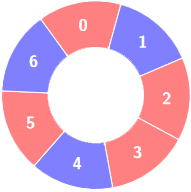
Alternating groups:
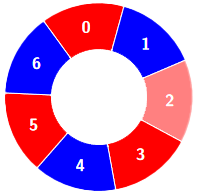
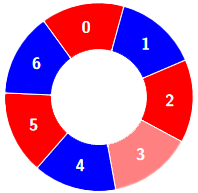
Example 3:
Input: colors = [1,1,0,1], k = 4
Output: 0
Explanation:
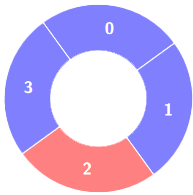
Constraints:
3 <= colors.length <= 1050 <= colors[i] <= 13 <= k <= colors.length
Solutions
Solution 1: Single Pass
We can unfold the ring into an array of length $2n$ and then traverse this array from left to right. We use a variable $\textit{cnt}$ to record the current length of the alternating group. If we encounter the same color, we reset $\textit{cnt}$ to $1$; otherwise, we increment $\textit{cnt}$. If $\textit{cnt} \ge k$ and the current position $i$ is greater than or equal to $n$, then we have found an alternating group, and we increment the answer by one.
After the traversal, we return the answer.
The time complexity is $O(n)$, where $n$ is the length of the array $\textit{colors}$. The space complexity is $O(1)$.
-
class Solution { public int numberOfAlternatingGroups(int[] colors, int k) { int n = colors.length; int ans = 0, cnt = 0; for (int i = 0; i < n << 1; ++i) { if (i > 0 && colors[i % n] == colors[(i - 1) % n]) { cnt = 1; } else { ++cnt; } ans += i >= n && cnt >= k ? 1 : 0; } return ans; } } -
class Solution { public: int numberOfAlternatingGroups(vector<int>& colors, int k) { int n = colors.size(); int ans = 0, cnt = 0; for (int i = 0; i < n << 1; ++i) { if (i && colors[i % n] == colors[(i - 1) % n]) { cnt = 1; } else { ++cnt; } ans += i >= n && cnt >= k ? 1 : 0; } return ans; } }; -
class Solution: def numberOfAlternatingGroups(self, colors: List[int], k: int) -> int: n = len(colors) ans = cnt = 0 for i in range(n << 1): if i and colors[i % n] == colors[(i - 1) % n]: cnt = 1 else: cnt += 1 ans += i >= n and cnt >= k return ans -
func numberOfAlternatingGroups(colors []int, k int) (ans int) { n := len(colors) cnt := 0 for i := 0; i < n<<1; i++ { if i > 0 && colors[i%n] == colors[(i-1)%n] { cnt = 1 } else { cnt++ } if i >= n && cnt >= k { ans++ } } return } -
function numberOfAlternatingGroups(colors: number[], k: number): number { const n = colors.length; let [ans, cnt] = [0, 0]; for (let i = 0; i < n << 1; ++i) { if (i && colors[i % n] === colors[(i - 1) % n]) { cnt = 1; } else { ++cnt; } ans += i >= n && cnt >= k ? 1 : 0; } return ans; }